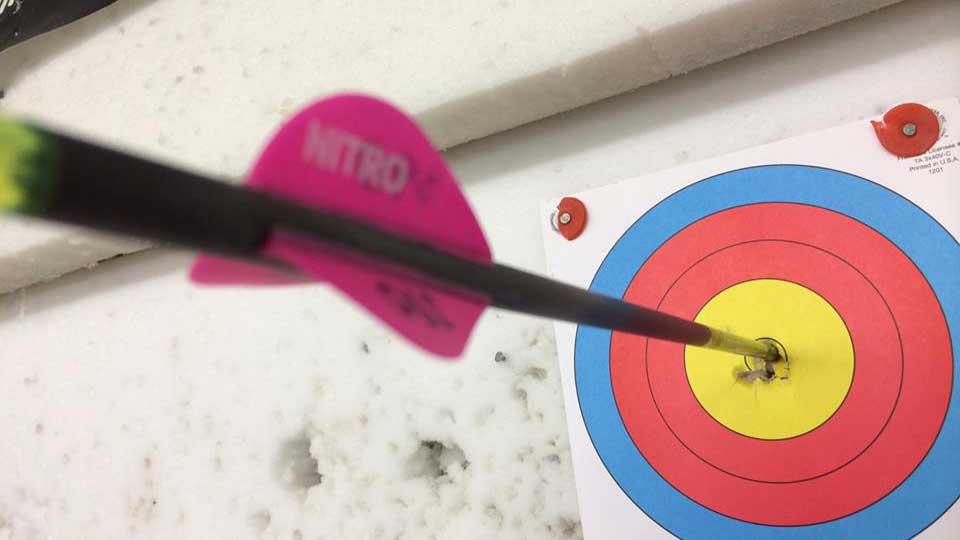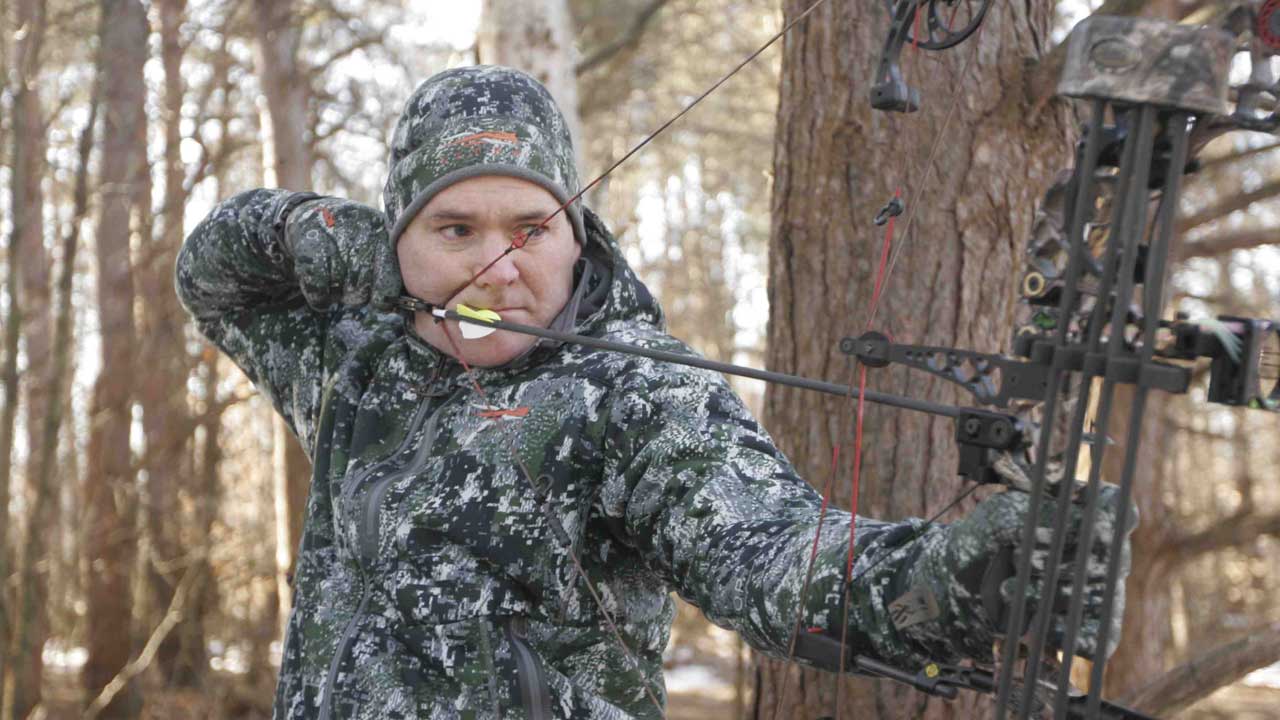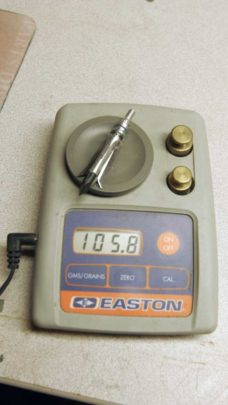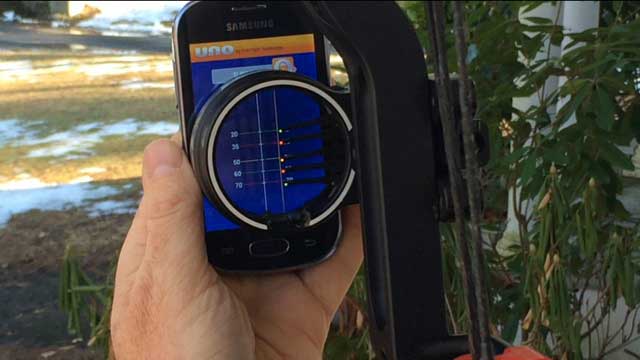Being able to split an apple in half at 80 yards with an arrow is something all bowhunters want to be able to do, but the truth is most of are busy. Finding the time to perfect our shot to the point where we can consistently split hairs at long ranges is difficult. According to Rene Tapia from Dead On Archery in Idaho, being accurate at 80 yards and beyond isn’t extremely difficult and it doesn’t take as much time as you might think. “For starters, if a person wants to be able to drive tacks at long distances, they need to practice at long distances. I would never shoot at a live animal at 80 yards in the woods, but I practice at 80 yards all the time. Shooting at 80 yards helps me fine tune my form and if I start shooting well at 80 yards, a 40- or 50-yard shot in the field is going to be much easier,” Tapia said.

With a properly tuned bow and some extra practice being accurate a long distances is easier than ever.
According to Tapia, one thing that causes many archers to be off the mark at great distances is their rest not being tuned properly. Either the fletching comes in contact with the rest when the shot is taken or the rest causes the arrow to hit slightly to the left or to the right of the mark. “A rest needs to be dead center for the arrow to hit perfectly every time. To ensure this is the case, I do walk back tuning,” Tapia explained. When walk back tuning, a target is setup with nothing but a long vertical line on it. Many people use duct tape. “You shoot at 10 yards, 20 yards and keep going back by ten yards and shoot the same arrow each time. The goal is to keep the arrow hitting as close to the center line as possible. If it starts drifting to the left or right slightly as you backup, the rest will need to be moved a bit to the right or left depending on which direction the shooter is off. If a rest is shooting to the left or right a little bit, it will make a big difference at extreme ranges. Being off less than a couple inches at close range can mean being off by almost a foot at long ranges. When walk back tuning, if my arrows start to curve one way or the other, I know I need to adjust my rest. Often it only needs to be adjusted a tiny amount.”
What can also affect long range shooting is inconsistencies in shooting form. “To hit the same mark shot after shot, we must release an arrow the exact same way. To do that, we need a consistent anchor point. I like the jaw and the tip of the nose. If the string is on the tip of my nose and I am using a peep sight, I am going to produce a consistent release, especially if I relax and don’t punch the trigger,” Tapia added.

Having a consistent anchor point is a key factor to long distance accuracy.

Every broadhead that is supposed to be 100 grains isn’t actually 100 grains. Every arrow doesn’t weigh exactly the same.
Another thing that can affect long range accuracy is inconsistent arrow weight. “Every broadhead that is supposed to be 100 grains isn’t actually 100 grains. Every arrow doesn’t weigh exactly the same. To be able to drive tacks, my arrows need to weigh the same so when I let it fly, it hits the same mark as the arrow before it. At 20 or 30 yards, if one broadhead weighs a little more than the next one, no one will notice a difference. But at 80 yards, a few grains here and a few grains there starts adding up and affect accuracy,” Tapia explained. The only way to know exactly how much each arrow in your quiver weighs is to weigh each broadhead and arrow and match them up so they all weigh about the same. Some western hunters I talk to want all of their arrows to weigh exactly the same. Some try to keep them within five or ten grains of each another.
A broadhead can really effect the downrange accuracy of an arrow. Many bowhunters now believe because they are using a mechanical head or a small diameter fixed blade head they don’t need to shoot broadheads when they practice anymore. John Schaffer from Schaffer Performance Archery in Minneapolis says otherwise. “I always suggest to my customers that they plan on wasting a broadhead or two before they go hunting. Field points and broadheads fly differently, especially at long ranges. Even mechanical heads can fly different than the practice heads. Practicing with a real broadhead can help a bowhunter fine tune their setup. The last thing a bowhunter wants to find out in the field is that their practice head didn’t fly the same as their broadhead,” Schaffer explained.
Even mechanical heads can fly different than the practice heads. The last thing a bowhunter wants to find out in the field is that their practice head didn’t fly the same as their broadhead.
Lastly, confidence plays a big role in the sport of archery and confidence starts when you are sighting in a bow. “I like to use the UNO Archery app when I am sighting in my bow. It makes setting my pins quick and easy because it gives me pin gaps. It takes a lot of the guesswork out of sighting in a bow. Eliminating human error when setting up a bow can really help a bowhunter shrink their groups. Because I set up a lot of bows at the pro shop, the app is a huge time saver,” Tapia explained.
Some may think that the app is a shortcut that makes an archer lazy. Robert Donahoe, inventor of the app, says otherwise. “Properly tuned equipment and flawless form are the most important elements for long distance shooting. Setting up a bow sight can be a distraction that leads to less attention being paid to shooting form. With the UNO archery app, an archer can quickly get their sight set up and immediately begin working on refining their shooting form for accuracy and repeatability at any distance. After all, you can change a tire if you have a jack and a lug wrench. Changing a tire doesn’t make you a better driver … you need to get on the road and drive.”

Setting up a bow sight can be a distraction that leads to less attention being paid to shooting form. With the UNO archery app, an archer can quickly get their sight set up and immediately begin working on refining their shooting form for accuracy and repeatability at any distance.
The bottom line is, if you want to drive tacks at 80 or a 100 yards which will make harvesting an animal at 40 yards easier, you will need to pay attention to every little detail of your bow, how it is setup, and how you shoot… but all the hard work is worth it. Being able to hit a pie plate at 80 yards is extremely rewarding.

 By
By 



